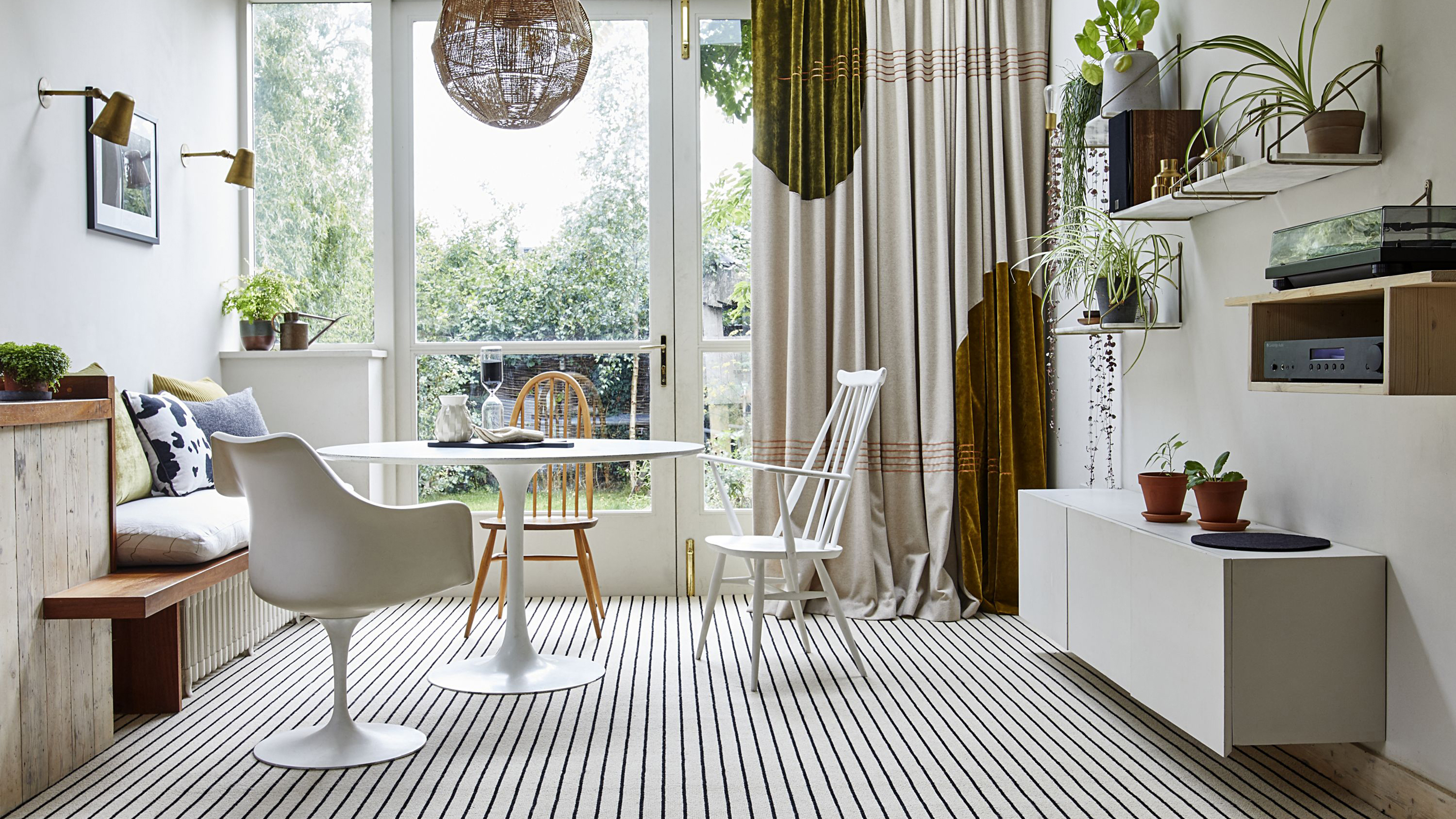

Christina Chrysostomou
How often should you drag your amazing vacuum cleaner our of your cleaning closet? Well, while there's no one-size-fits-all answer, your lifestyle can offer clues about the best vacuuming schedule for you. Vacuuming might not be your favorite task, but there's no arguing that it's your best ally in the chore war against dust bunnies, crumbs, pet fur, and your own stray locks.
The ideal frequency will depend on things like the number of pets in the house, whether you typically wear shoes while you're at home, and the type of flooring you have. I mean, you also need to think about how many rugs you own, too. Admittedly, even we had to clean our act up after researching 'how often should you vacuum your carpet'.
But it's not just this floorcovering that needs attention. You'll also need a suitable vac timetable for hard floors including real wood, LVT, and tiles too.
We spoke to the experts to find the right balance for your home and family. Here's what they told us:
How often should you vacuum?
'Vacuum [a new carpet] daily if possible during the first few weeks. Loose fibers can work their way to the surface, and these will be removed by vacuuming,' says Punam Chada, carpet buyer, Carpetright.
'Routinely vacuuming will help to prevent dirt and grit from getting into the carpet fibers and also helps to keep the tufts upright. A vacuum cleaner fitted with a beater bar and/or brushes is recommended for cut pile carpets. A vacuum cleaner without a beater bar or brushes is best for loop pile carpets.'
How often should you vacuum hardwood floors?
If you're wondering how to clean hardwood floors, the good news is that they're surprisingly easy to maintain. Hardwood, tile, and other synthetic wood surfaces or laminates should be vacuumed at least once a week, with a vacuum that specializes in hard flooring. (If you have a multipurpose vacuum, make sure the setting is properly adjusted since using a carpet setting can scratch wood floors.)
'Vacuuming is ideal for laminate flooring which, although stylish and low-maintenance, is not waterproof. So, nothing more than a damp cloth should be used to deal with dirt and spillages. Vacuum daily if your laminate flooring is in a high-traffic area that picks up dirt,' says David Snazel, hard flooring buyer, Carpetright.
'Cleaning and maintaining vinyl flooring is relatively hassle-free. Loose debris, dust, and dirt can be removed with a soft brush or gentle vacuuming. Never push, pull or drag heavy objects across your vinyl flooring as this can mark, scratch, and damage the surface. Keep vinyl free from dirt with a regular vacuum or sweep, but take care to be gentle and keep all sharp objects away from the surface of the vinyl.'
With the exception of laminate, you’ll want to wet clean your floors every week or two using one of the best mops. Think more frequently if your home is heavily trafficked with muddy paws or dirty sneakers. Better still, the Proscenic P11 vacuum cleaner kills two birds with one stone as a multifunctional appliance that mops and vacuums.
Most importantly, don’t be tempted to skip your weekly vacuuming if your floors don’t look dirty or dingy. Allergens and dust can gather whether you can see it or not.
And, as much as we love sharing advice and top tips, we sincerely hope you're never put in the position where you'll need to read our guide on how to get rid of dustmites (though it's there if you need it).
How often should you vacuum carpet?
Carpeted floors call for more frequent vacuuming than other types of flooring. That’s because carpet’s fibrous makeup can hold and trap the same dust, bacteria, and allergens that can collect on hardwood. Don’t be tempted to put off the task...waiting to remove debris can cause it to become more ingrained in the carpet.
Upright vacuums are ideal for carpet cleaning, but you can use any vacuum with a carpet setting. If you have multiple options, be sure to select the option that most closely suits your rug pile.
For immaculate results, using one of the best carpet cleaners will get rid of stains and dirt that's embedded thoroughly beneath the surface. Some come with see-through compartments where you can physically see the water go from suddy to muddy. Cool, even if a little gross. But, if these appliances aren't within budget, spot-cleaning carpet with the best upholstery cleaners is also a viable option for accidental wine and juice spills.
It's easy to forget staircase runners but don't neglect these. From mom and dad running the household (or out of the door for work) to teens stomping in after a long day of school or sport, this area can harbor germs and dirt from in and outside the house.
Oh, and don't forget the rugs that adorn external spaces too. Just because your best outdoor rug might get 'washed' by the rain, it can still get soiled by bird poop and other organic material.
How often should you vacuum a rug?
The best rugs can quickly add interest and liven up an otherwise boring scheme quite cheaply. However, they still need to be maintained to ensure you can love them for years to come. Like carpet, area rugs can trap dirt and grime.
Not to mention, keeping area rugs clean can also help protect the floors underneath. For smaller rugs, give them a good shake outside, vacuum the flooring underneath, replace the rug, and then vacuum.
These floorcloths receive quite a bit of traffic, whether you're using the best living room rug to add a soft, cozy, and warm touch for your tootsies, or popping an entryway runner near your hallway entrance to reduce the amount of debris you walk into the home, rugs can be resilient but need to be treated with care too.
'As a rule, rugs should be vacuumed at least twice weekly,' advises Daniel Prendergast, managing director, The Rug Seller.
For every day, frequent vacuuming, shake off any surface dirt and dust, and then vacuum the rug. Suction-only vacuum cleaners are preferable to rotary brush or upright vacuum cleaners which can sometimes damage the surface of the pile and fray the edges of rugs.
'Use the nozzle attachment to lightly vacuum the rug to remove any surface dust and loose yarns. There are anti-bacterial powders that can be sprinkled onto rugs to rid them of germs but always test on a small section first.'
'And don’t forget the underside - vacuum the backing of the rug once a month to remove trapped dust, dirt, allergens, and bacteria. In general, when it comes to cleaning all types of rugs, little and often is essential to keep them fresh and dust-free. In fact, it’s safe to say there may be more than just a bug in your rug if it’s left uncleaned - according to Allergy UK, vacuuming alone won’t remove carpet dust mites which can trigger allergic reactions such as asthma and eczema.'
It’s also worth thinking about the frequency of a deeper clean based on where your rug is. Floor coverings subjected to outdoor shoes, spills, and pets on a daily basis need to be cleaned at least every two months ideally; for rugs in other areas a deep clean at least twice a year is recommended.
If you really want to get into the nitty-gritty, we've got a whole guide on how to clean a rug, whether it's made from cotton, jute, or even sheepskin.
How often should pet owners vacuum?
If you have dogs or cats living with you, you’re going to need to clean a floor or two more frequently. Ideally, you should be vacuuming daily.
This goes for both animals that do and don’t shed. Pets that go outside don’t have the option of taking off their shoes, so they can bring bacteria into the house. And, furry friends that do shed will leave hair and dander all over your floors. Letting that build-up can cause inhabitants to experience allergic reactions, even if they don’t have a pet allergy. Not to mention, it's just plain gross.
Frequent vacuuming can also do wonders to keep dog smell at bay. Consider investing in one of the best vacuums for pet hair or a robot vacuum to do some of the work for you. It’s also wise to invest in a carpet cleaner or hire a professional steam cleaning service yearly.
And (particularly if you have a young pup or a dog that gets excited), you've probably had to clear up an accident or two. So knowing how to clean urine properly (including cleaning with baking soda) will help relieve your home of that pungent ammonia-like odor.
Vacuuming for allergies and asthma
According to the Asthma and Allergy Foundation of America, if you have allergies or asthma, you’ll want to vacuum at least once a week (or more) using a vacuum with a HEPA filter.
These vacuums are specially designed to catch even the smallest of allergens trapped in your carpet. Your dustbuster can also help to keep the bedbugs at bay – which allergies or not – nobody wants. Therefore, knowing how to clean a mattress effectively can eradicate these pests.
Adjusting for room usage
Of course, the suggestions above are not set in stone. You’ll need to adjust accordingly depending on how much traffic your floors and carpets see.
For rooms that don’t get much use (formal dining rooms, guest rooms, etc.), you can go every two weeks and spot clean in between with one of the best handheld vacuums and a microfiber cloth (these Amazon ones are expert-approved) if you see dust settling.
On the other end of the spectrum, high-traffic spaces (mudrooms, entryways, hallways, recreation rooms) will need more frequent vacuuming. Think every other day and up, depending on the size of your brood.
For everything else, weekly is a good rule of thumb. For example, you may go to your bedroom every day, but chances are you aren’t wearing shoes or doing too much stomping around.
In general, you don’t want to wait until you can see the dirt and dust bunnies, but if you do, it’s time to run the cleaner.
Why should you vacuum?
'Regularly cleaning your carpet helps to keep it in good condition and prolong its life,' says Jemma Dayman, buyer, carpets and rugs, Carpetright.
'A home simply cannot look clean if the carpets in it are not actually clean and regularly vacuuming your carpet will remove dirt and dust. You’ll continue to appreciate the look and feel of your carpet and will be happy to show off your home.'
How to remove pet hairs from carpet
Just as cats and dogs can act up and not listen to our commands, pet hair can also be stubborn too. But Dayman has a set of instructions to tackle fluff proving you can teach an old dog new tricks by fetching a few things you'll have lying about at home.
- Use a lint roller to remove any surface pet hairs.
- Vacuum your carpet to remove as much hair as possible. If you’re not getting much hair up, try spraying the carpet with a mix of fabric softener and water. Let this dry and try vacuuming it again to remove more hair.
- Rubber gloves are also great at removing pet hair. Simply put on the gloves and give the carpet a good rub.
- A window squeegee can also work wonders at removing pet hairs. Drag the squeegee along the length and breadth of the carpet and the hair will easily be removed.
Join our newsletter
Get small space home decor ideas, celeb inspiration, DIY tips and more, straight to your inbox!
After serving as an editor for luxury publications for nearly a decade, Ann Loynd Burton struck out on her own as a freelance writer covering design and lifestyle. Along with her work highlighting decor trends for Real Homes, Loynd Burton has covered interiors for such publications as Apartment Therapy, Aspire, Cottages & Gardens, and Galerie.
- Christina ChrysostomouFormer acting head ecommerce editor
-
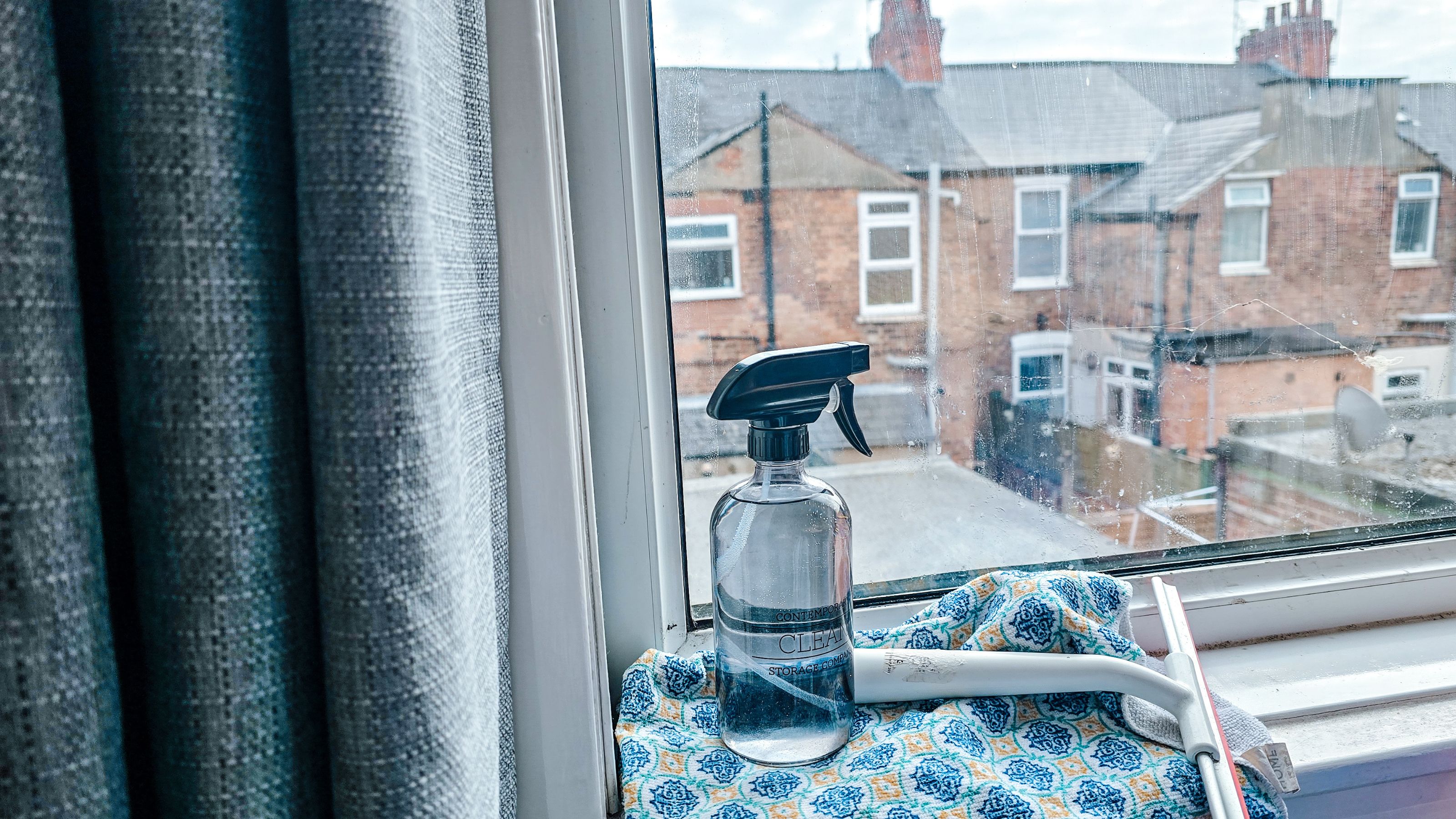 How to clean windows without streaks — 5 easy steps that cleaning pros always follow
How to clean windows without streaks — 5 easy steps that cleaning pros always followThis method on how to clean windows is favored by professional cleaners. We've asked them for the steps you should follow, plus picked cleaning buys
By Eve Smallman
-
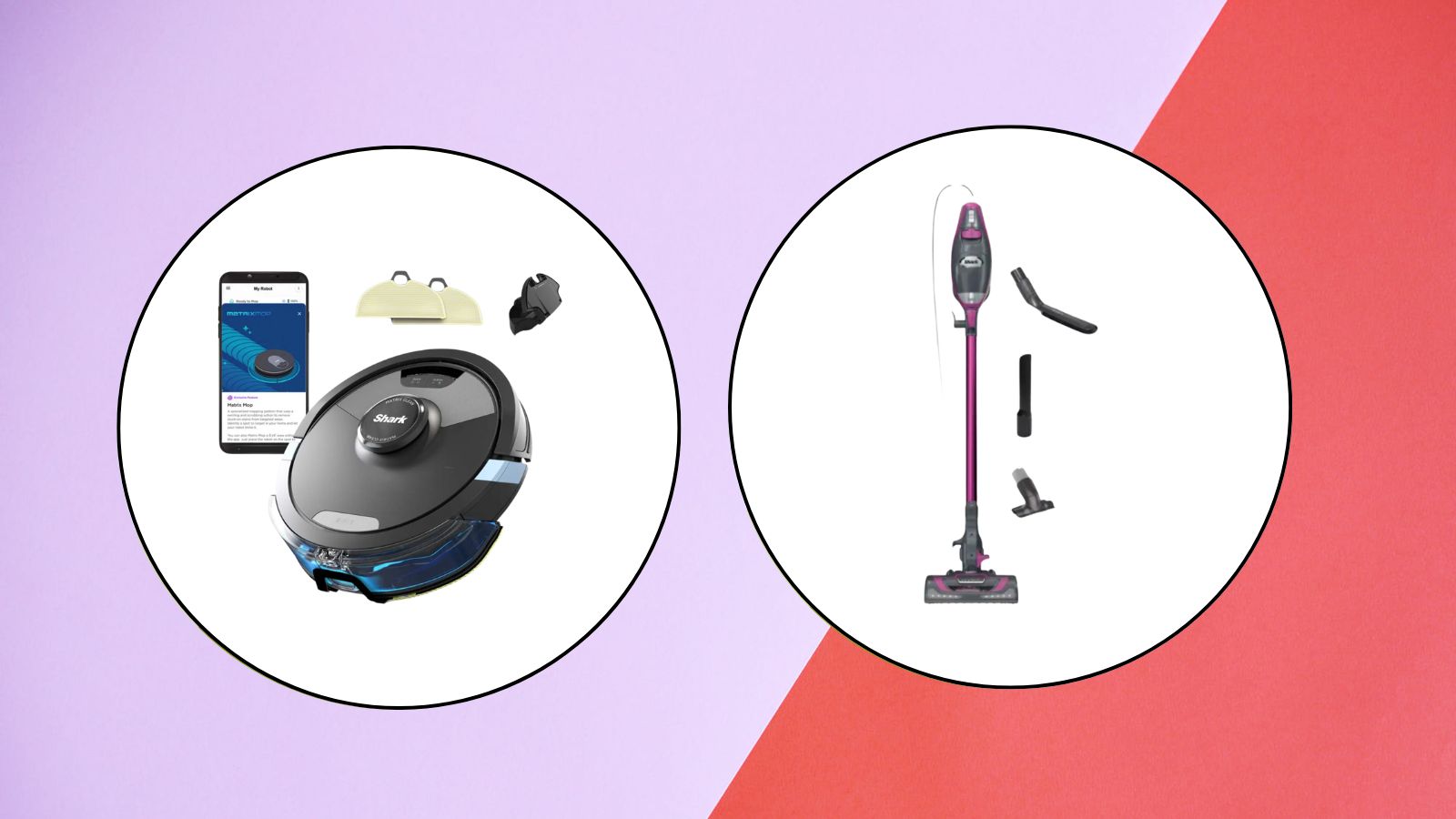 The latest Shark sale deals are perfect for pollen-proofing your home — with up to $150 off our favorite vacuums
The latest Shark sale deals are perfect for pollen-proofing your home — with up to $150 off our favorite vacuumsWe found the latest Shark sale deals on vacuums that are sure to be swooped up, especially as spring blooms trigger pollen allergies and we're in need of extra cleaning
By Danielle Valente
-
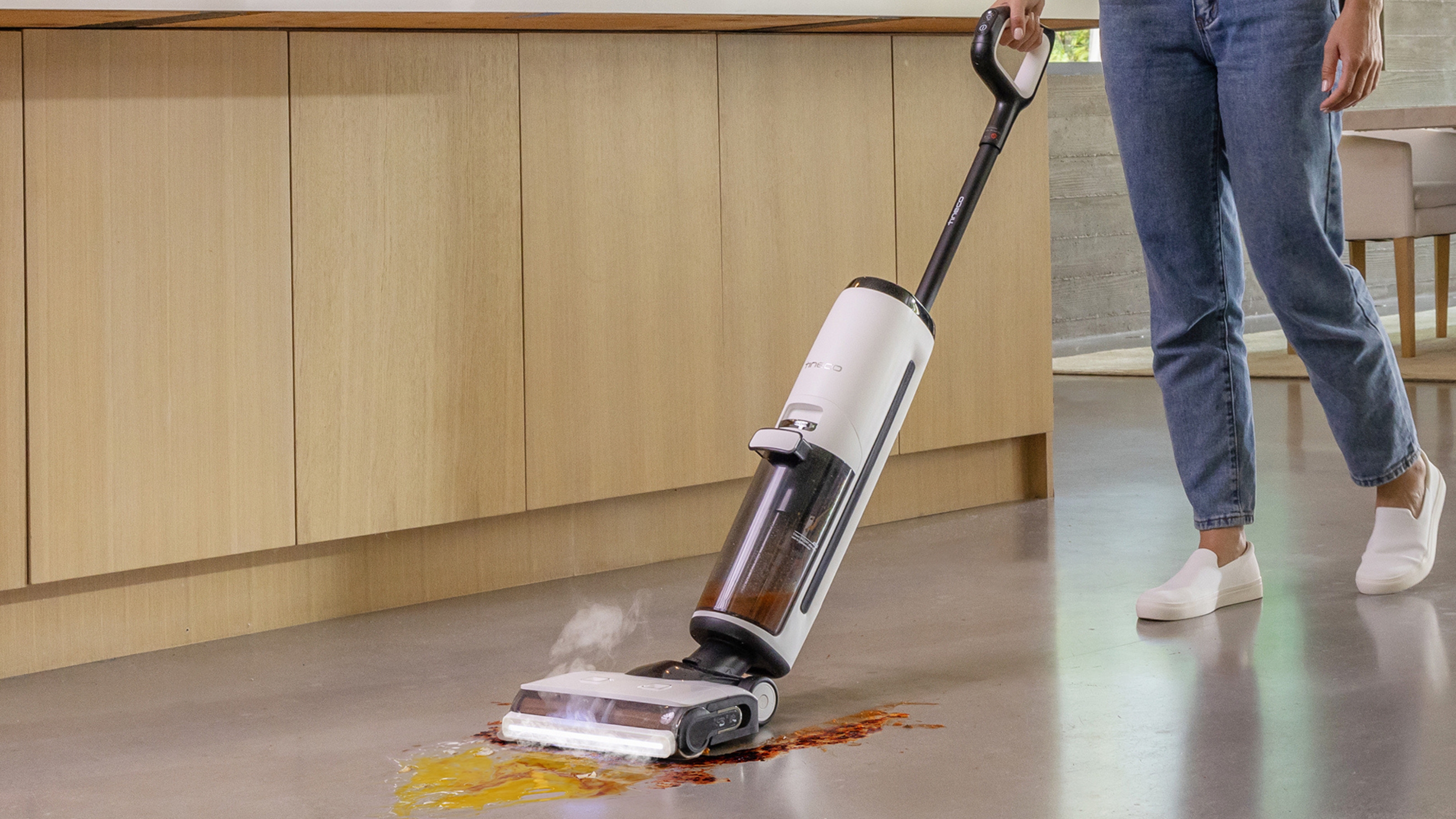
 Tineco Floor One S7 steam wet-dry vacuum review — spotless floors with minimal effort
Tineco Floor One S7 steam wet-dry vacuum review — spotless floors with minimal effortOur contributing editor, Camryn Rabideau, tests the Tineco Floor One S7 steam wet-dry vacuum in her New England homestead property
By Camryn Rabideau
-
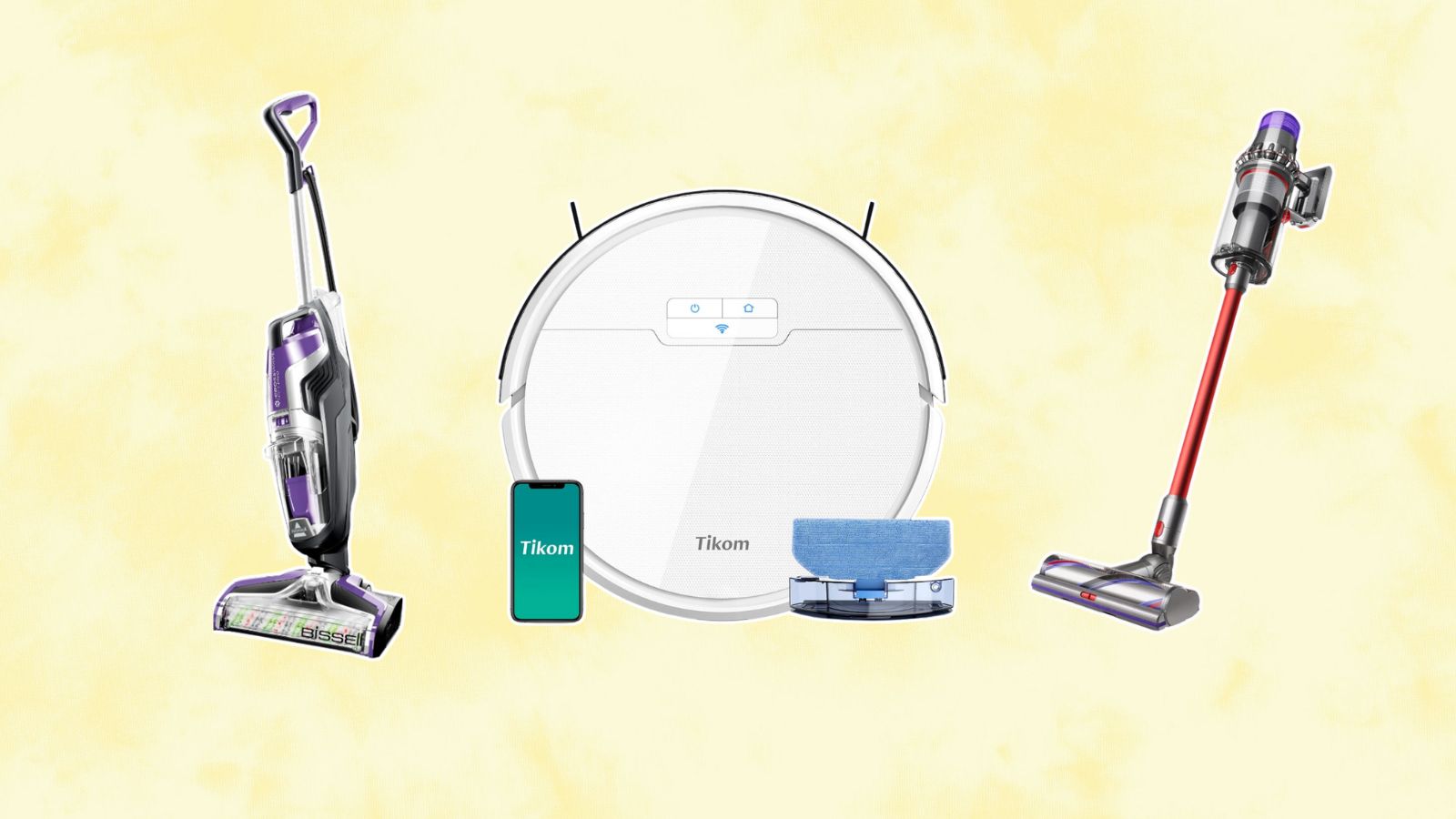 Amazon vacuum cleaners to nab during the retailer's Big Spring Sale — save up to 60% off our go-to small-space finds
Amazon vacuum cleaners to nab during the retailer's Big Spring Sale — save up to 60% off our go-to small-space findsChecking out the savings on Amazon? Vacuum cleaners are a must-buy during their first Big Spring Sale — here are our favorites up to 60% off
By Danielle Valente
-
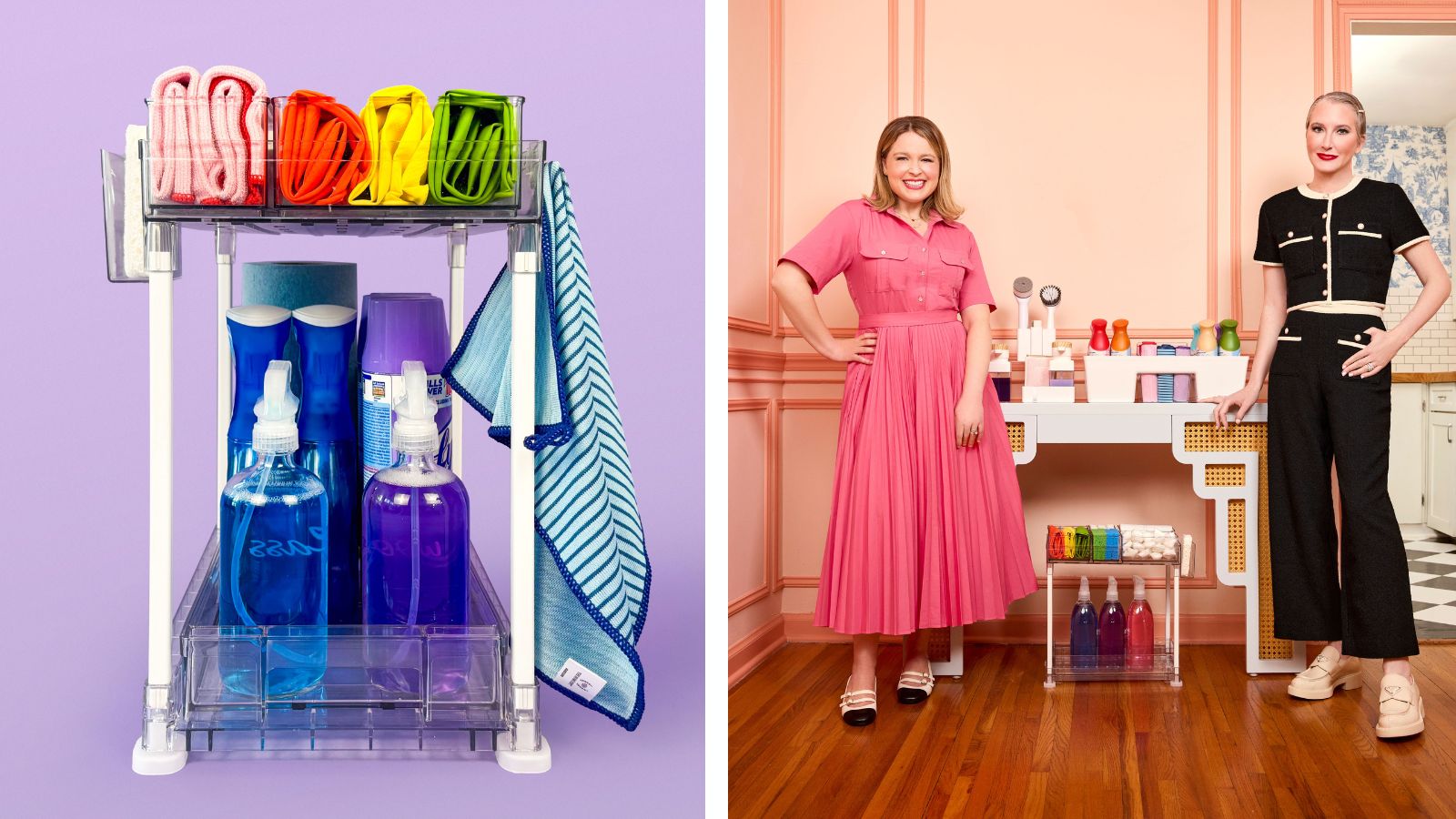 The Home Edit Walmart cleaning collection has just debuted with finds from $3
The Home Edit Walmart cleaning collection has just debuted with finds from $3Spring cleaning, anyone? The Home Edit Walmart cleaning collection has hit shelves with picks from $3
By Danielle Valente
-
 How to clean carpet on stairs — 3 simple steps to a spruced up staircase
How to clean carpet on stairs — 3 simple steps to a spruced up staircaseWant to know how to clean carpet on stairs? Our experts explain the simple steps to a sparkling stairway without too much elbow grease
By Andy van Terheyden
-
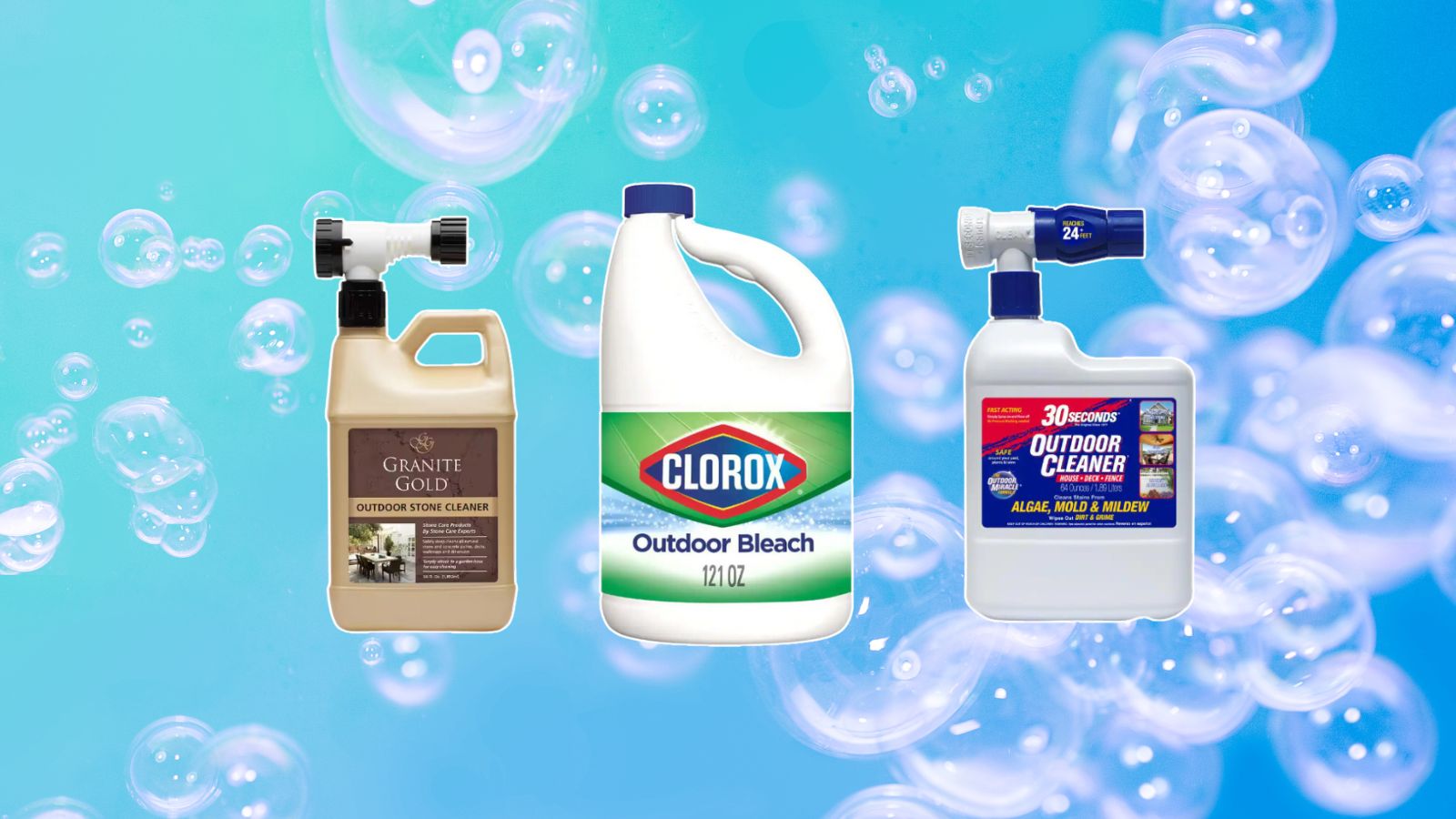 The Home Depot backyard and patio cleaning supplies we're stocking up on before spring
The Home Depot backyard and patio cleaning supplies we're stocking up on before springDon't forget the outdoors when spring cleaning — The Home Depot backyard and patio cleaning buys from $11 will assist with tidying up
By Danielle Valente
-
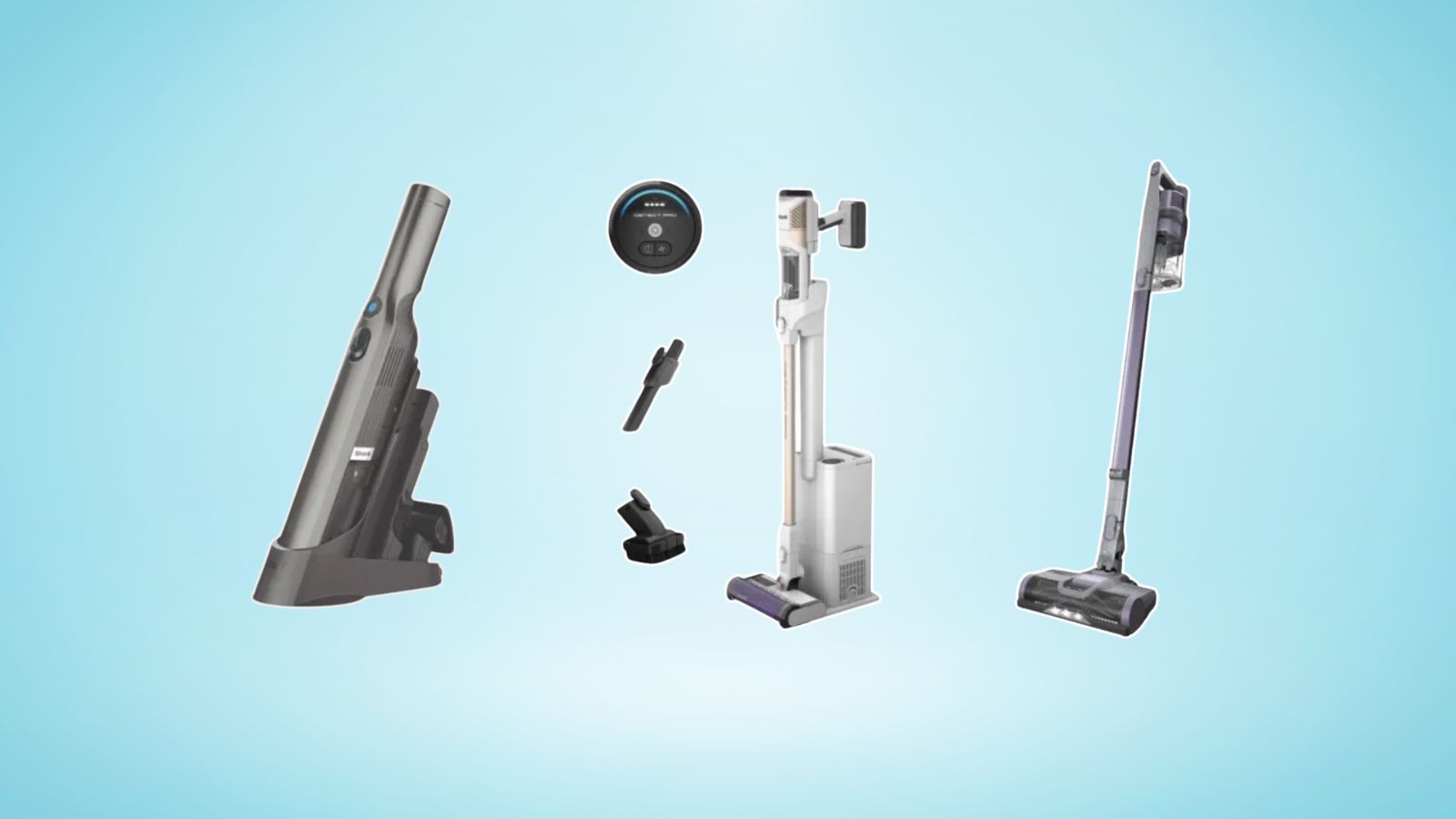 The Shark Detect Pro vacuum and other models are on sale for St Patrick's Day — perfect picks for your spring clean
The Shark Detect Pro vacuum and other models are on sale for St Patrick's Day — perfect picks for your spring cleanWhether you're eyeing the Shark Detect Pro Vacuum or Shark Pet Cordless Stick Vacuum, shop the St. Patty's Day sale for a discount on the best vacuums on shelves
By Danielle Valente